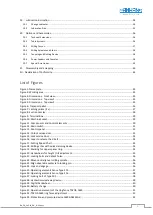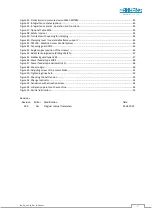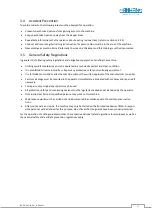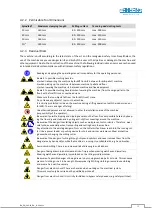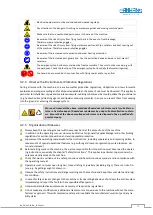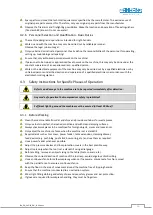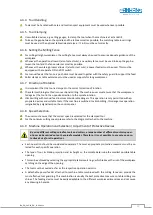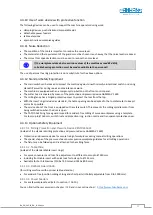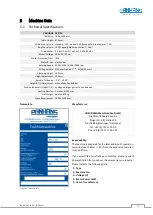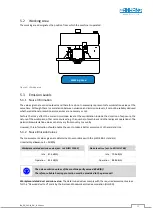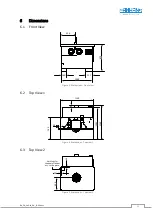
BA_PH_245-10_EN_13-22.docx
19
4.4.4
Tool Handling
Tools must be handled with care and tool transport equipment must be used whenever possible.
4.4.5
Tool Clamping
Use suitable devices, e.g. setting gauges, to clamp the tool when the machine is at a standstill.
To keep the gap between the spindle and the table as small as possible, the matching table insert rings
must be used or the optional table slide plate (see
16.2) must be set correctly.
4.4.6
Setting the Milling Fence
For milling straight workpieces, the milling fence must always be used to ensure adequate guidance of the
workpiece.
Whenever the operation allows it (also for test cuts), an auxiliary fence must be used to keep the gap be-
tween the tool and the fence rulers as small as possible.
Whenever the working process allows it (also for test cuts), a power feeder must be used. This must be
equipped with a separate ON and OFF switch.
For manual feed at the fence, a push stick must be used together with the safety guard to support the feed.
Roller stands or table extensions must be used as supports for long workpieces.
4.4.7
Direction of Rotation
It is important that the tool is clamped in the correct direction of rotation.
The safer machining method is conventional milling. The machine user must ensure that the workpiece is
fed against the tool in the opposite direction to the spindle rotation.
Climb milling with manual feed involves considerable dangers. This operation is only permitted with ap-
propriate devices and suitable tools. If the machine is switched to climb milling, this dangerous operation
is signalled by a signal lamp on the control panel.
4.4.8
Speed Selection
The user must ensure that the correct speed is selected for the clamped tool.
For the optimum cutting speed, please refer to the diagram attached to the machine.
4.4.9
Machine Operation and Selection / Adjustment of Protective Devices
By using different milling spindles, tools and cutters, a large number of different machining oper-
ations can be carried out on the spindle moulder. Therefore, it is not possible to use only one pro-
tective device for all operations.
•
Each operation should be considered separately. The most appropriate protective measures must be se-
lected for each specific operation.
•
The type of tool, its blade projection and its height on the spindle determine the smallest possible table
opening.
•
This can be achieved by selecting the appropriate table insert rings, which reduces the risk of the workpiece
catching on the edge of the opening.
•
The tool must be covered as far as the respective operation permits.
•
A detachable power feeder attached to machine table combined with the milling fence can provide the
most effective tool guarding. This combination is usually the best protective measure on table milling ma-
chines. The feeding device must be easily adaptable to the different workpiece dimensions and not cause
any drawing-in hazards.

